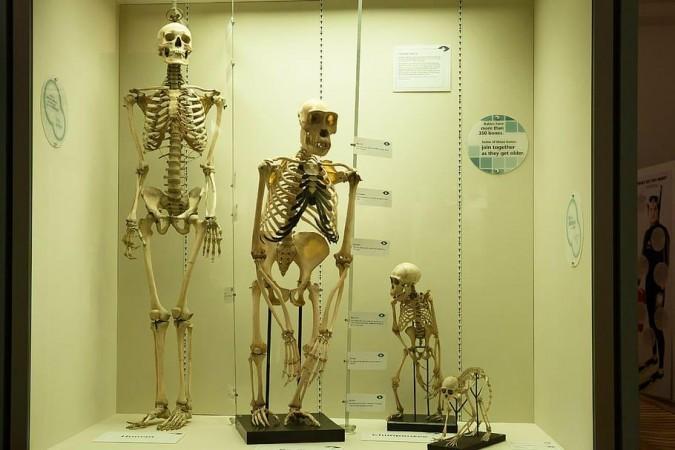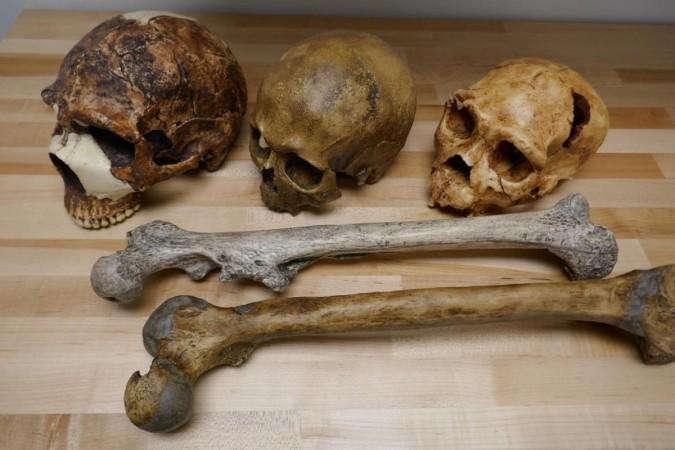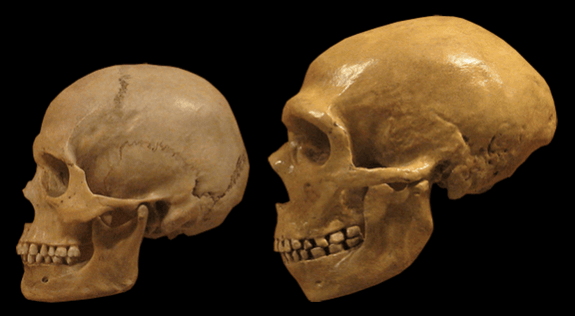There is a lot that climate change can be blamed for. Erratic weather patterns, rising sea levels, loss of habitats— the list goes on. However, can change in climate lead to changes in the bodies of human beings? Yes, say an interdisciplinary team of scientists. According to a new study, the average size of the human body has fluctuated over millions of years depending on changes in the climate.
The study, led by researchers from the Universities of Cambridge and Tübingen, acquired measurements from over 300 fossils from across the world belonging to the genus Homo. Through the integration of the obtained data with the reconstruction of the world's regional climates, the team identified the exact climate experienced by the remains when they were living. Hot climates led to smaller bodies while colder climates resulted in larger bodies the study discovered.
"Our study indicates that climate - particularly temperature - has been the main driver of changes in body size for the past million years," said Dr. Andrea Manica, lead author of the study, in a statement. The research was published in the journal Nature Communications.
Larger and Bigger

Emerging in the continent of Africa about 300,000 years ago, Homo Sapiens became the most dominant member of the genus. However, the genus itself has existed for millions of years. It consists of several extinct species such as the Neanderthals, and other related species such as Homo erectus and Homo habilis.
The determining characteristic of the genus Homo has been the gradual increase in the size of the body and the brain with every passing species. In comparison to older species such as the Homo habilis, our species is not only 50 percent heavier but our brain sizes are three times larger. However, the factors powering these changes remain contested.
For the study, the authors analyzed over 300 fossilized remains from different species of Homo from across the world. This data was combined with global paleoclimatic reconstructions. Using this, the team tested the effect of environmental factors on the evolution of the brain and body size within the genus over the course of the last one million years.
Climates Role In Body Size

They found that colder and harsher climates promoted the evolution of larger body sizes, while warmer climates led to the development of smaller bodies; thereby evidencing significant fluctuation in the last million years. A larger size is said to serve as a buffer against colder temperatures as less heat is lost from the body when the mass is larger relative to the surface area.
"We can see from people living today that those in warmer climates tend to be smaller, and those living in colder climates tend to be bigger. We now know that the same climatic influences have been at work for the last million years," explained Dr. Manica.
Evolution of Brain Size
As far as the evolution of the brain size goes—despite being drastic—it did not occur in tandem with the size of the body, according to the authors. The correlation between the effect of environmental factors and brain size was generally weak. While the brain size was observed to be larger among Homo living in habitats containing less vegetation (such as open steppes and grasslands), it was noted be the same in areas that were ecologically stable as well.

"We found that different factors determine brain size and body size - they're not under the same evolutionary pressures. The environment has a much greater influence on our body size than our brain size," stated Dr. Manuel Will, first author of the study.
When combined with archaeological data, the findings of the study indicate that people living in habitats of less vegetation hunted larger animals for food. This may have served as a complex task that could have potentially triggered the evolution of larger brains.
"There is an indirect environmental influence on brain size in more stable and open areas: the amount of nutrients gained from the environment had to be sufficient to allow for the maintenance and growth of our large and particularly energy-demanding brains," emphasized Dr. Will.
Possibility of Shrinkage In Brain Size

The findings of the study, therefore, suggest that while climate played a role in the evolution of size, non-environmental factors played a bigger role in driving the growth of larger brains in Homo. Additional cognitive challenges, the complexity of social lives, diversified diet, and the use of advanced technology, could be some of the factors promoting larger brain sizes. Interestingly, the scientists aver that there enough evidence to posit that the human body and brain sizes will continue to evolve.
However, the brain size of our species seems to have begun shrinking since the beginning of the Holocene age or epoch (around 11,650 years ago). This trend may continue expressed the authors. The rising dependence on sophisticated technology may result in increasing shrinkage over the course of the next few thousand years the scientists say. "It's fun to speculate about what will happen to body and brain sizes in the future, but we should be careful not to extrapolate too much based on the last million years because so many factors can change," concluded Manica.








